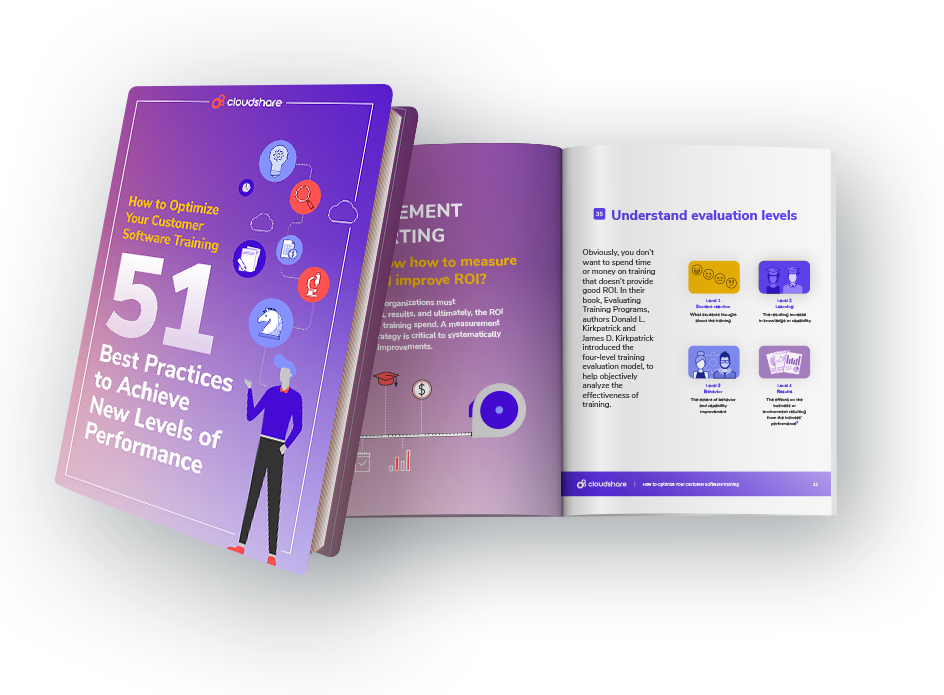Virtual training
10 Steps to Convert Traditional Classroom Content into Effective Virtual Instructor-Led Training

What’s the Biggest Mistake in Converting a Classroom Course into a Virtual Training Environment?
Before planning your first virtual instructor-led training course, you might want to consider what not to do:
Do not copy-paste your original classroom course!
The benefits of traditional instructor-led training have long been discussed and established; there’s just no match for the training outcome of face-to-face collaboration, instructor interaction, and student participation, all inherent in the traditional classroom.
Well, there was no match until along came hybrid instructor-led training. Unlike e-learning and self-paced training, virtual instructor-led training (VILT) combines all the benefits of the traditional instructor-led classroom with the cost-efficiency, interactivity, and convenience of the virtual environment.
Previously, we showed how research clearly indicates a right and wrong way to utilize the VILT modality, and we presented 9 vital practices to develop and conduct effective VILT. We also showed that the most successful VILT courses were specifically designed to utilize the unique characteristics of the virtual environment and implemented thoroughly across all stakeholders in the organization. But how do you go about making that happen?
This post is dedicated to converting traditional training courses into effective hybrid/VILT programs that equal (and even surpass) the benefits of traditional classroom training modalities in 10 simple steps. But first…
51 Best Practices to Boost Customer Software Training

Why Not Just Copy-Paste?
Think about it like posting something on social networks.
If you post a professional article on Facebook, almost no one will read it. However, if you post the exact text on LinkedIn (even to the same crowd), chances are more people will read it.
Why? Different communication technologies form different expectations among the audience regarding the type of content delivered. Fail to adjust your content to the platform, and you will lose your audience’s attention.
The same goes for different training modalities.
If you communicate the same traditional classroom content in the VILT modality, chances are you will lose your audience to the wonders of distraction – and pretty quickly.
So, now that copy-paste is no longer an option, how do we convert traditional classroom content into effective VILT courses?
What’s so unique about VILT is that it incorporates synchronous with asynchronous learning, and it delivers the same experience to both classroom and remote participants. However, it is this very benefit that also makes it challenging to design a VILT course with the right content to fit:

Audience Technology Instructor
To address all 3 of these aspects when transforming traditional content into VILT courses, training organizations, developers, and instructors should follow ten simple but crucial steps.
10 Steps to Convert Traditional Classroom Content into Effective Virtual Instructor-Led Training
1. Get to know your new VILT audience
One thing to address before discussing the ins and outs of VILT effective content — Who is our target audience for VILT courses?
Born at the turn of the century, the primary workforce in organizations today is a generation called “millennials.” Between the ages of 18 and 34, this young, tech-savvy generation is used to instantly accessing information in the palm of their hand. If you want to communicate with them, there’s primarily one way – through interactive technology.
And both words (interactive and technology) matter equally here; if you overuse technology without interaction, you become a presenter rather than an instructor, and retention goes out the window. Conversely, rely too heavily on personal instruction without technology, and you don’t even have their attention from the beginning.
The essential thing to remember in establishing an effective learning experience for millennials is that, to them, training is essentially a relationship.
2. Insert interactive learning features in the original training program
In successfully converting traditional content into VILT courses, you’ll need to redesign the original content to fit the specific virtual environment and create an interactive experience for participants. In VILT, much like in traditional classroom training, there are three imperative types of interaction that make the training modality effective:
- Participants with the instructor
- Participants with the content
- Participants with their peer participants
But unlike traditional classroom training, the hybrid training technology offers advanced features that enhance this three-way interaction and incorporates it into the training program.
That’s why it’s crucial, on the one hand, for VILT trainers to get to know the unique interactive features this technology offers and maximize its effectiveness. But, on the other hand, for participants to realize they are expected both to be seen and heard.
Invitations for participants to attend and chat, electronic whiteboarding, over-the-shoulder assistance, and observation – are just a few examples of how to create interactive communication between learners, instructors, and content.
3. Turn original PowerPoint slides into engaging and dynamic imaging
Keep in mind that VILT is mainly conducted through a screen, which inevitably means that the training content should be constantly interesting and engaging. One way to accomplish this goal is to incorporate intriguing dynamic imaging that complements and enriches the content.
4. Don’t lose the story
The timeless rule of thumb for delivering any kind of content is all the more viable when it comes to VILT. You may use all the visual gimmicks and interactive features this hybrid technology offers, but if you don’t utilize them to tell a story, they won’t do the job.
Many e-learning courses are full of interactive activities just for the sake of interaction when the purpose of interactive features is to add value to the overall learning experience, not to overshadow it.
The instructor’s role in telling a story to deliver the message is absolutely imperative, and if the training lacks the teaching, all of VILT’s benefits go down the drain.
5. Go on live
If it’s an option, use live broadcasting in some of your training classes, and place the webcam so that it picks up the instructor’s movements and facial expressions. Remember, millennial students greatly appreciate personal communication, which is an excellent opportunity to catch their attention through interpersonal interaction.
6. Incorporate real-time and self-paced activities in the training program
Whatever can be learned hands-on should be learned hands-on. There are some things students just have to experience with learning by doing. The VILT training environment allows you to assign hands-on “homework” and combine real-time training with after-class self-paced activities.
Hybrid virtual experiences allow you to create, provision and share training environments with students for them to work with after class, giving them a chance to experience the new tools/software on their own.
This combination of guided, unattended, and ongoing instruction provides the ideal learning environment for students.
7. Design one-on-one student-tailored instruction
One of the advantages of VILT over traditional classroom training is the ability to provide students with a one-on-one learning experience in their own individual lab environments. In addition, VILT students can pause, restart, reboot, or revert at any given moment and reuse training materials, exercises, and feedback with a mouse click.
This shift from a curriculum-based environment allows the instructor to create student-specific training programs and match each participant’s pace while constantly evaluating training progress.
8. Create different versions of the same course
The hybrid training modality allows you to duplicate, change or reuse the training environments you create. This is especially effective when delivering training programs across organizations; it enables you to take the traditional training program, adapt it for different audiences and redesign it as you wish in different versions to match employees at all levels across the organization (beginners and advanced users, company employees, desktop learning, etc.)
9. Utilize social media
One of the best ways to maximize peer-to-peer interaction in a VILT course is by creating a forum for participants to discuss and share their experiences and problems and ask for support. It provides participants with a great sense of community and is also a way for them to become more active with the learning materials.
Remember, one of the core advantages of VILT is the large number of peers that can share and exchange opinions and feedback, which is why an open discussion or forum can create a supportive platform to maximize training effectiveness.
This brings us to the final step…
10. Ask for feedback
VILT, by nature, provides a better way for participants to express their ideas than a traditional classroom scenario. And for instructors, this is excellent news. When converting a training program from a traditional classroom setting to VILT, you’ll be able to revise the course based on students’ constructive feedback.
Conducting surveys is always a good idea – both at the end of the course and throughout the training. Aside from making your next course a better one, it provides participants yet another opportunity to interact with the content and instructor.
Here’s the thing: VILT helps improve retention
When retention is so difficult to achieve, and students are accustomed to constant distractions, the only choice is to speak their language and adapt training content to reach and fascinate them. That, in a nutshell, is what hybrid instructor-led training is all about, and the faster you convert your training programs to the VILT modality, the more effective your training will be.
Instructors, and quite often training organizations as a whole, believe they can take PowerPoint presentations from traditional classroom training, move them to a learning management system, and be done with it. Of course, this can be done, but it won’t be a successful conversion of content, and what worked wonders in face-to-face scenarios will most likely collapse in the VILT format.
The delicate balance between traditional instructor-led benefits and the virtual environment’s cost-effectiveness, interactivity, and convenience makes VILT the most effective training modality today. And crafting a successful VILT course depends on granting each of these elements their rightful weight.


